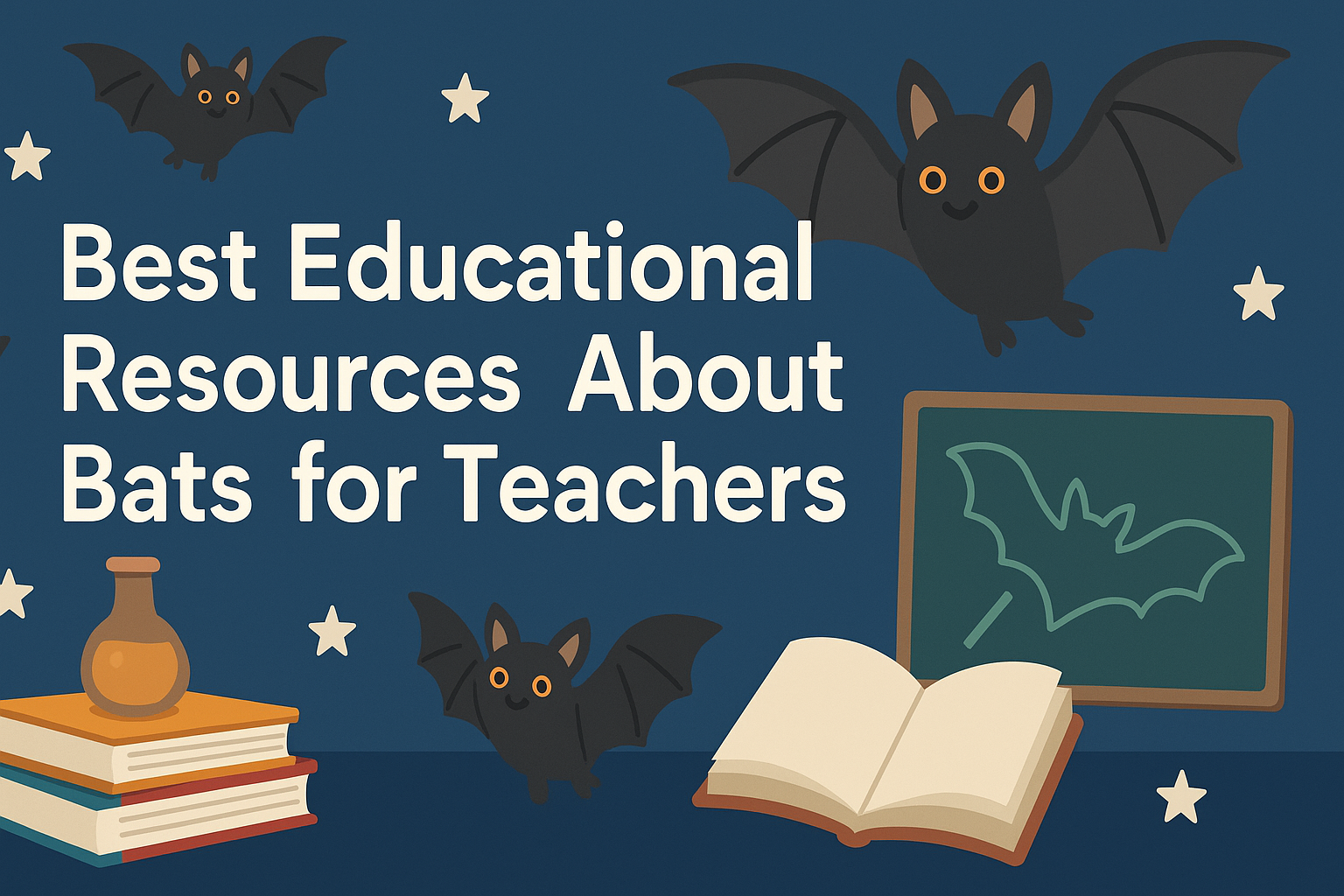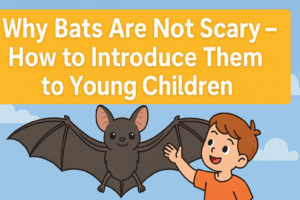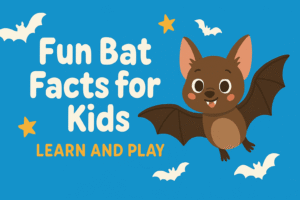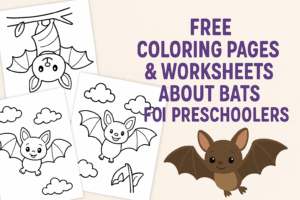Let’s be honest: bats often get a bad rap, especially around Halloween. But in reality? They’re fascinating, gentle, vital members of our ecosystems—and the perfect teaching tool to blend science, conservation, and creativity in your classroom.
Whether you’re working with kindergartners learning about animals or high school students exploring ecology and biodiversity, bats make education exciting. And lucky for you, there’s a treasure trove of bat-focused educational materials out there.
Ready to inspire curiosity and debunk a few bat myths along the way?
Here are the top teacher-approved bat resources, all organized by age level and topic—with links, lesson plan tips, and activity ideas included.
Elementary School (Grades K–5)
1. Bat Conservation International (BCI) – Bat Education Resources
What you’ll find:
- Printable bat fact sheets
- Hands-on activities
- Interactive games
- FREE downloadable curriculum kits
Best for: Science centers, nature units, animal adaptations, nocturnal animals.
Try this: “Build a Bat House” blueprint and coloring pages for habitat learning.
2. Stellaluna by Janell Cannon – Book + Lesson Plans
A classroom classic. A sweet story about a fruit bat finding her identity.
Resources available:
- Free lesson plans on Teachers Pay Teachers
- Vocabulary worksheets
- Reading comprehension quizzes
- Life science extensions
Themes to explore: Empathy, animal behavior, diversity, and adaptation.
Perfect for: Grades 1–3 literacy + science combo.
3. Project EduBat (U.S. Fish & Wildlife Service)
What you’ll find:
- Interactive whiteboard-friendly presentations
- Species-specific information
- Bat-themed STEM challenges
- Printable games & puzzles
Grade range: K–12 (but elementary-friendly material is included)
Pro tip: Download their full “Bat Trunk” PDF—it’s a ready-to-teach kit!
4. National Wildlife Federation – Ranger Rick’s Bat Adventures
Why it’s awesome:
- Short, engaging articles with visuals
- Kid-friendly bat facts and behavior explanations
- Printable stories, quizzes, and comics
Use it for: Indoor recess, homework packets, science Fridays.
5. Bat Week (Late October) – Educator Toolkit
What’s inside:
- Full teaching guides for K–5
- Puzzles, crafts, and coloring sheets
- Virtual learning tools
- “Build a Bat Habitat” class challenge
Use it annually during Bat Week (Oct 24–31) or anytime bats fit your curriculum.
Middle School (Grades 6–8)
6. NABat: North American Bat Monitoring Program – Curriculum Resources
What you get:
- Citizen science integration
- Data collection tools
- Science experiment templates
- Echolocation lessons
Why it rocks: Kids can actually participate in real science by contributing bat data in their region.
7. PBS LearningMedia – “Bats: Myth and Reality”
What you’ll find:
- Engaging videos about bat myths
- Lesson plans & teacher guides
- Short science quizzes
- Connections to biodiversity and food webs
Topics covered: Echolocation, misconceptions, adaptation, predator/prey relationships.
Pair it with: A creative writing assignment—“A Day in the Life of a Bat.”
8. Echo Meter Touch by Wildlife Acoustics (Advanced STEM Tool)
For tech-loving classes:
Use iPads or smartphones to record and see bat echolocation in real-time.
Hands-on STEM experience:
- Record bat calls
- Identify species by sound
- Discuss bioacoustics and field research
Great for science fairs, STEM clubs, and outdoor labs.
High School (Grades 9–12)
9. Bat Conservation International – High School Lessons
What you’ll find:
- Species diversity deep dives
- White-nose syndrome research case studies
- Ecosystem services discussion prompts
- Genetics and evolution explorations
Use in: AP Biology, Environmental Science, Ecology, and Conservation Science classes.
Project idea: Have students create infographics on bat species, threats, and how to help.
10. Smithsonian Learning Lab – Bat Biodiversity Collections
learninglab.si.edu (Search “bats”)
Why it’s next-level:
- Uses Smithsonian museum specimens
- Explore bat evolution, physiology, and global distribution
- Includes primary sources, videos, and quizzes
Great for: Research projects, virtual learning units, and interdisciplinary projects.
11. Citizen Science: Join a Local Bat Count
Check with:
- Ohio Department of Natural Resources
- Bat Conservation International
- Local nature centers
Why it’s cool: Students can contribute real data by helping count bats at dusk and track local bat populations.
Perfect for: Environmental clubs or volunteer credit projects.
Bonus Cross-Curricular Activities for Any Grade
Art:
- Create bat murals using real species found in your state
- Bat origami with biology facts written on each one
ELA:
- Read Stellaluna (K–3) or Night Wings (4–6)
- Research paper: “Why Bats Matter to the Planet”
- Persuasive writing: “Bats Aren’t Scary—Here’s Why”
Math:
- Graph insect consumption by species
- Calculate how many mosquitoes a colony eats nightly
Music:
- Create a “Bat Soundscape” using recorded echolocation and ambient forest sounds
Final Thoughts: Education Changes the Narrative
Most kids start out thinking bats are spooky.
Your classroom can change that.
With the right resources, lessons, and a little creative flair, you can teach your students that:
- Bats are mammals
- Bats help humans
- Bats are essential to ecosystems
- And bats need protection—not fear
The more they learn, the more they care.
And the more they care, the more they grow into compassionate, informed citizens.
Want a ready-made bat lesson pack, project-based unit, or printable bat fact cards? Let me know—I can create custom classroom content just for your grade level.




